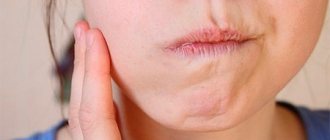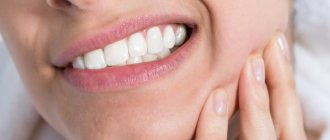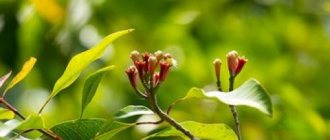In the Middle Ages, sage was associated with human immortality. Such properties were recognized by the Persians and Chinese, who used the plant as a remedy for aging. Today it is a popular herb with medicinal properties, which is why it is grown in gardens. Because of its unique aroma, sage is used to flavor a variety of dishes.
Growing a plant in your garden, in addition to its healing properties, you will receive pleasure - it will give a charming appearance, a pleasant aroma spreading throughout the garden...
Beneficial features
Traditional medicine can offer many natural remedies to improve health. One of the most famous is sage. Hippocrates also used it to restore strength to his patients. Since ancient times, the plant has been considered a sacred herb.
Even today, people, in particular, admirers of the rules of healthy lifestyle, who know about the benefits of sage for the body, grow it in their garden plots. It owes its beneficial qualities to its rich composition, which includes the following substances:
- essential oils,
- formic acid,
- proteins,
- coumarin,
- flavonoids,
- tannins,
- resins,
- vitamins,
- microelements.
Such a rich composition makes sage a leader among medicinal plants.
Can it be brewed like tea? Of course you can! This drink will be a real pleasure, reminiscent of summer, with a captivating aroma that protects against colds and improves your mood...
How to use brewed sage - can you drink it throughout the day, or only at certain times of the day? Drinking aromatic tea in the morning will provide energy, while drinking tea in the afternoon will add energy and relieve stress.
How does sage work for gum inflammation and toothache?
Sage tops the list of medicinal herbs for the treatment of diseases of the throat and oral cavity. Its high efficiency is explained by its chemical composition:
- The vitamin-mineral complex makes the gums stronger and more elastic, prevents tissue loss and accelerates regeneration.
- Phytoncides - make the epithelium more resistant to external influences.
- Resins – envelop mucous tissues and create a bactericidal film.
- Acids soften the mucous membrane and accelerate its healing.
- Astringent components – relieve pain and reduce gum bleeding.
- Aroma components - freshen breath.
Health effects
The beneficial properties of this natural medicine can hardly be overestimated. Sage leaves and stems have a number of beneficial effects on the body:
- They have an antiseptic effect.
- Stop bleeding.
- Stimulates the functioning of the gastrointestinal tract.
- Increases immunity.
- Stops inflammatory processes.
- A strong decoction will help heal bruises and bruises.
- Relieve the symptoms of chronic infectious diseases of the bladder.
- Will help with caries, periodontal disease, gum inflammation.
- Eliminate pain associated with peptic ulcers.
- Facilitates the course of rheumatism and arthritis.
- Relieve itching due to dermatitis, soften frostbite.
- They will help overcome insomnia, nervous tension, and stress.
- Sage is a good antidepressant.
Indications and contraindications for use
Sage is indicated for patients suffering from the following diseases:
- Periodontitis.
- Periodontitis.
- Stomatitis.
- Gingivitis.
- Ulcers on mucous membranes.
- Pustular inflammation of gum tissue.
- Acute toothache.
Gum diseases
Sage should not be taken by persons suffering from one of the following ailments:
- Acute kidney inflammation.
- Decreased production of thyroid hormones.
- Individual intolerance to the substance.
Sage has estrogenic properties, so it should not be used by pregnant or breastfeeding women. In addition, it is strictly prohibited for women suffering from polycystic disease, fibroids and endometriosis.
Infertility treatment
The benefits of sage include treating infertility. This property is ensured by the high content of natural estrogen.
The most valuable part is the seeds, treatment with which is recommended for both women and men. But greens are used more often. Its active ingredients improve cervical permeability, which increases the penetration of sperm into the uterus, helping a woman become pregnant.
Also, consuming sage reduces female frigidity.
The plant should be used with caution, since its active substances can cause poisoning and irritation of the mucous membrane. With the onset of pregnancy and during lactation, you should abandon the medicinal herb.
To prepare an infusion for conception, pour 1 tsp. 200 ml of boiling water, strain after 10-15 minutes. Divide the total amount into 3-4 servings and drink throughout the day. It is recommended to use the infusion from the 5th day of the cycle for 10 days, until ovulation. If there is no desired effect, repeat treatment after a month.
The effectiveness of natural therapy will increase with the use of calcium or progesterone preparations (Utrozhestan, Duphaston).
You can use a decoction from the plant in the form of hot sitz baths, which will not only improve hormonal levels, but also cure inflammatory diseases that can cause problems with conception. Briefly boil 50 g of herb in 1 liter of water, strain after 20 minutes, pour into a bowl, add warm water to the required volume. Sit in the bath for 20 minutes. Carry out the procedure 3 times a week.
Indications and contraindications - very important knowledge
There are several points that, if not observed, this beneficial herb can be harmful to health.
It is important to pay attention to the quality of raw materials and the places where they are sold.
An overdose of salvia can lead to migraines and poisoning.
There are a number of diseases that can be treated with sage:
- suppuration;
- gum abscess;
- pharynx diseases;
- bleeding gums;
- inflammation of the supporting apparatus of the teeth;
- inflammation in certain areas of the oral cavity;
- inflammation of the root sheath or peri-root tissues;
- wounds and ulcers on the palate, the inner surface of the cheeks and lips, the surface and root of the tongue.
To eliminate the above diseases, it is recommended to rinse the mouth with decoctions and infusions. But there are cases when this process can cause harm:
- If you have an allergy or individual intolerance, the body's immune system may react inappropriately, even if you simply inhale the aroma or taste it a little.
- If the dosage is excessive and the time of consumption is exceeded, gradual destruction of the mucous membranes begins.
- At an advanced stage of disease , when serious surgical intervention is required.
- It is better not to use this medicinal plant to treat the oral cavity of children under five years of age, pregnant or lactating women and people suffering from epileptic seizures .
Termination of lactation
The need to stop lactation arises for various reasons.
There are a number of medications available to address this situation. But given the fact that they are all made on the basis of synthesized hormones, women often decide to use medicinal plants. One natural remedy is sage, which is the most common herb used to stop milk production.
To prepare the drink, you can use the herb in bags (sold in pharmacies), which greatly simplifies its use. Fill 1 sachet with 250 ml of boiling water. Divide the tea into 3-4 parts and drink throughout the day.
To stop lactation, you can also brew sage leaves. 1 tsp leaves, pour 200 ml of boiling water. Strain after 15 minutes. Drink 50 ml 4 times a day.
Sage oil is also recommended to stop milk production. Use it up to 4 times a day, 3-5 drops. Usually, after 3-4 days, lactation stops. Irregular and painful menstruation
Sage is similar to female hormones - estrogens. It is used during puberty, menopause, irregular, painful menstruation. The plant prevents hot flashes, hypersensitivity, and is used for heavy or, conversely, scanty periods.
A hot infusion is used to terminate pregnancy in the early stages. The proportions - how much raw material to brew - are standard, but you should drink about 2 glasses a day. But the use of this method in modern doctors causes a nervous tic, because... Causing a miscarriage on your own is not just harmful, but even life-threatening!
250 ml of boiling water pour 1 tsp. leaves, strain after 10 minutes. Drink 3 times a day, 1/3 of the total volume of liquid. The course of admission is maximum 1 week.
Sage for gargling
There are a number of contraindications to the use of medicinal sage, so it should be included in therapy in consultation with your doctor. Taking a natural medicine does not cause side effects; only in rare cases does it cause allergic reactions.
But women during pregnancy should use it with extreme caution, after consulting with a doctor.
In any case, internal use of sage or preparations made from it is absolutely contraindicated for pregnant women, since the plant contains substances that can cause uterine contractions and provoke a miscarriage. In addition, sage promotes:
- increased blood pressure in a pregnant woman;
- development of hormonal imbalance.
Products based on the plant can only be used as a gargle, but a specialist, observing the course of pregnancy and the condition of the expectant mother, can advise her to replace sage with other means:
- miramistin;
- furatsilin;
- sea salt.
Sometimes your doctor may approve the use of sage as a gargle. The composition for it is an infusion of a small amount of herb in a glass of boiling water, filtered ½ hour after pouring the herb with water.
It is also contraindicated to take sage:
- breastfeeding mothers;
- women suffering from certain gynecological diseases;
- patients with hypothyroidism;
- women with menstrual irregularities;
- children under 5 years old;
- for kidney diseases in the acute stage;
- patients with hypertension;
- people with hypersensitivity to its action.
The course of treatment with sage should be limited in time, since poisoning of the body is possible due to the systematic use of the medicinal plant.
You should take sage products for no more than 3 months. It is necessary to take long breaks between courses.
Limitations in the use of products from this plant are due to the fact that sage is rich in essential oils, which contain thujone and salvinorin-A. The first are toxicants, and salvinorin-A, despite its antimicrobial effect, is a hallucinogen. For this reason, the administration of sage and preparations made from it to young children is excluded.
Using medicinal herbs to treat throat
After warning about the consequences of using sage, you can move on to the question of using the plant in treating the throat. For sore throat, after the first symptoms appear, you should simply chew or suck the dried leaves of the plant.
This procedure should be repeated as often as possible. At the initial stage of the disease, you can prepare a rinse of sage and sea salt. The leaves of the plant need to be poured with boiling water with salt dissolved in it. The product is infused in a thermos or prepared in a water bath.
Gargling should be repeated 4-5 times a day.
Sage also helps if treatment for a sore throat is started with some delay. Then an infusion is prepared, which, in addition to this herb, includes:
- pine buds;
- anise;
- thyme;
- mint;
- calendula;
- chamomile;
- eucalyptus.
This infusion is used for rinsing.
An infusion of crushed sage leaves poured into boiling water helps with purulent sore throat. The throat should be gargled with a warm mixture at least 6 times a day. Even severe inflammation of the tonsils will be stopped.
An effective treatment for sore throat is an alcohol tincture of a medicinal herb. To make it, you need to pour vodka over the leaves and leave the composition for 48 hours in a warm place. The tincture is used as an additive to medicinal decoctions for gargling.
For pharyngitis, an infusion prepared from sage and St. John's wort successfully fights the disease. Both herbs are taken in equal proportions. You need to rinse your throat with a product made from them. The same infusion is also intended for internal use. The rinse can be made without St. John's wort. In addition to pharyngitis, it treats sore throat and stomatitis.
Cold, cough
The methods for brewing herbs for adults and children for coughs, colds, and inflammatory processes in the respiratory tract are different. Due to the plant hormones contained in the plant, it is not advisable for children to take the herbal medicine internally. As an alternative, gargling is recommended.
Recipe for adults:
- 1 tbsp. dry herbs, pour a glass of hot milk, leave for 30 minutes,
- add 1 tsp. honey,
- drink 1/3 glass 3 times a day.
Recipe for children:
- pour 1 tsp. sage leaves 250 ml boiling water,
- strain after 15 minutes,
- Use warm liquid to gargle every 2 hours.
Sage for gums in dentistry
- Enhances the regeneration of skin cells, protecting them from “bombardment” by harmful free radicals. Known to Chinese doctors as a remedy for “illnesses of the body and mind.”
- Scientists from the University of Vienna have laboratory confirmed the anti-inflammatory property of the plant's herb and the validity of taking salvia for catarrh in the oral cavity.
- Preparations based on sage not only heal, but also restore mucous membranes altered by inflammatory processes and serve as a filter from the spread of infection to healthy cells.
- In India, fresh leaves are used for skin ulcers and swollen gums. The ancient Greeks and Romans used the plant for any oral problems.
Benefits in dentistry
Most herbalists consider salvia to be the best herb for diseases of the gums, throat, teeth and mouth.
The dental uses of sage are due to:
- phytoncides in its composition restore the protective properties of the epithelium;
- vitamin-mineral complex reduces tissue looseness and permeability, restores regeneration;
- resins create the thinnest film on the mucous membrane and protect against bacterial penetration;
- acids soften the mucous membrane and accelerate its regeneration in case of lesions;
- astringent components anesthetize any catarrh in the mouth and reduce their bleeding;
- aromatic components deodorize the oral cavity, making breath fresh.
Methods of using sage in dentistry
In dentistry, several forms based on sage are used. These include:
- infusions;
- decoctions;
- alcohol tinctures;
- essential oils.
Sage mouth rinses
The dosage of the plant for mouth rinsing is individual, depending on the type of disease. Below are some recipes.
- Aphthae. 1 tsp raw materials per 250 ml of boiling water - rinse your mouth several times a day.
- Caries. Use tea to rinse your teeth.
- Periodontal disease. It is recommended to rinse the gums with honey tea - add 1 tbsp to the infusion prepared according to the above recipe. honey
- Pain in the neck. Compresses are recommended - 1 tbsp. herbs, pour 1/2 liter of boiling water, strain after 5-10 minutes, soak a clean cloth in the liquid, wrap your throat, cover with a dry scarf or towel. Make compresses several times a day.
Folk recipes
Herbal infusion
This recipe is universal and can be used internally and externally. For the recipe, dry raw materials are taken in the ratio of a tablespoon to a glass of boiling water (or a teaspoon of fresh herbs). It is most convenient to leave the product in a thermos for one hour. It is suitable for rinsing and irrigating the mouth.
Sage infusion is approved for diabetic patients who often have problems with the mucous membranes of the mouth and gums.
The most effective is a fresh infusion. It is better not to store the drug for longer than 12 hours. The most optimal temperature for using sage is body temperature.
Herbal decoction
For the decoction, add sage herb to a small saucepan (2 tablespoons per glass of boiling water). Place the saucepan in a bowl of boiling water and keep it in a water bath for 15 minutes. After cooling, squeeze out the broth and add boiled water to the original volume of one glass.
Do not allow the broth to boil in a water bath. The gas should be weak and allow the broth to “simmer” without active seething.
The decoction is stored in the refrigerator for a day and is slightly warmed for use.
The decoction is excellent for treating ulcerative lesions of the oral mucosa, stomatitis, gingivitis, and abrasions from dentures. You can use sage rinses up to 6 times a day.
Sage-based mixture for bleeding gums
This collection has antiseptic and drying properties. It is good for bleeding gums and ulcers on the oral mucosa. To collect, you need 2 teaspoons of chamomile and St. John's wort, as well as 3 teaspoons of sage and yarrow. Take a tablespoon of the mixture from the dry mixture of mixed herbs and pour a glass of boiling water over it. After half an hour, the infusion is filtered and used for rinsing in the morning/evening mode. They are also very effective for wiping gums for pain and inflammation.
Collection for periodontal disease
This infusion is good for periodontitis and periodontal disease, relieves tissue swelling (including gumboil), and strengthens loose gums.
- For infusion, take a tablespoon of sage and oak bark per half liter of boiling water. After 30 minutes, the product can be filtered and rinsed 3 times a day, complementing the main treatment.
- For toothache, gumboil, gingivitis and stomatitis, a mixture of sage and oak bark decoction will help greatly. Each decoction is prepared in the proportion of 5 g of dry herb to one glass of boiling water. The finished decoctions are filtered and mixed. This “mix” is used for hot rinsing.
Alcohol extract
Alcohol tinctures are stored for a long time, and this is why they are convenient. For vodka tincture, pour three tablespoons of dried sage herb into half a liter of vodka. In a glass jar, the extract is infused in a dark place for 2 weeks, shaking. Then the product is filtered and stored in a dark cabinet in a glass container.
The extract can be used both for rinsing (2 tablespoons of tincture per glass of warm water) and for oral administration (1 tablespoon in the morning) to improve immunity.
Salvia wine
This wine is used as a stimulant of defenses for frequent illnesses against the background of reduced immunity (including diseases of the oral cavity).
For the recipe, take a liter of good grape wine and 80 grams of sage leaves. The components are infused in a dark place for 8 days. Drink 2-3 tablespoons after meals to maintain immunity.
Sage oil
This homemade oil is good for lubricating gums when they are inflamed. To prepare, fresh salvia raw materials are poured into a jar and filled to the top with heated vegetable oil (olive, almond, corn, sunflower). Then the product is infused for 10 days in a dark place and shaken frequently. The finished oil is squeezed out and filtered.
Lozenges
Sage lozenges are prescribed to eliminate inflammation in the mouth.
Lozenges contain:
- dry sage extract;
- sage leaf extract.
The lozenges do not contain sugar and are suitable for diabetics.
How to use the tablets:
- Keep the lozenge in your mouth until completely dissolved.
- The longer the salvia extract stays in the mouth, the more effective the therapeutic result will be.
- You should not eat or drink anything for at least half an hour after dissolving the lozenges in order to preserve the effect of their components as much as possible with the formation of a therapeutic film.
- One lozenge is used every 2-3 hours. Adults are allowed up to 6 lozenges per day, and children - no more than 2 pieces with a 4-5 hour break.
Absorbable tablets are especially effective for the initial stage of oral diseases. Often lozenges stop inflammation in the oral cavity at its very beginning.
Other sage-based preparations
In pharmacies you can also purchase other types of sage-based products used in dentistry:
- mouth rinse;
- Weleda gum balm;
- lollipops with sage and verbena or other ingredients (honey, mint, lemon, blueberry, orange).
Sage essential oil
Sage essential oil is sold ready-made. It is yellowish with a bitter-tart aroma. Its powerful concentration helps destroy bacteria and viruses. This remedy is especially effective against streptococcus and Staphylococcus aureus in the oral cavity. Gargling with sage oil perfectly deodorizes the mouth and freshens breath. To rinse, dilute 4 drops of ether with a glass of warm water and a teaspoon of soda.
Essential oil will help with:
- gingivitis, stomatitis;
- inflammation of the pharynx, throat;
- periodontitis;
- unpleasant and putrid odor from the mouth;
- toothache.
Due to the maximum concentration of medicinal components, salvia ester is used only externally.
How to use sage oil
- pour warm boiled (not hot!) water into a glass;
- drop 6 drops of ether;
- clean your gums and teeth after eating;
- use the solution three times a day when rinsing.
For ether, hot water is not used, but only warm. Otherwise, its antiseptic effect will be minimal.
Sage tea
Sage tea is not often used in folk medicine. However, this tea perfectly “spurs up” sluggish immunity. For tea, take one sprig of the plant or a teaspoon of its herb per glass of boiling water.
Salvia tea is drunk hot. However, you should not use more than a glass per day.











